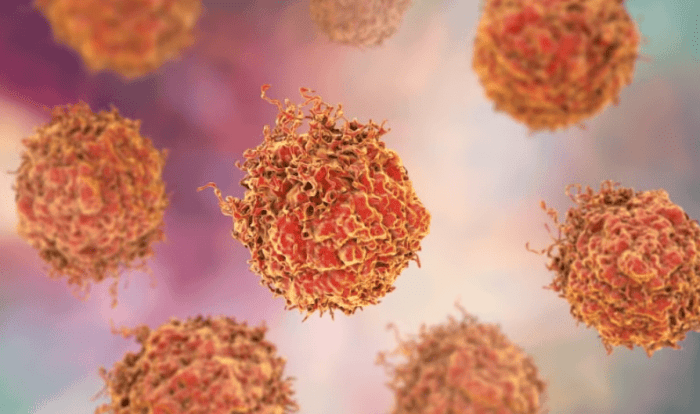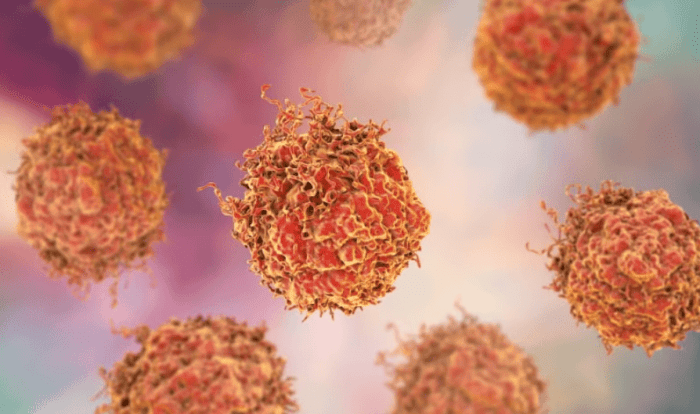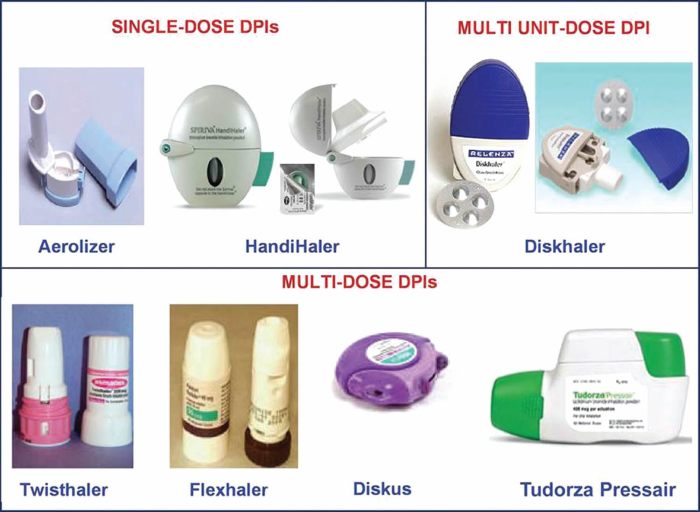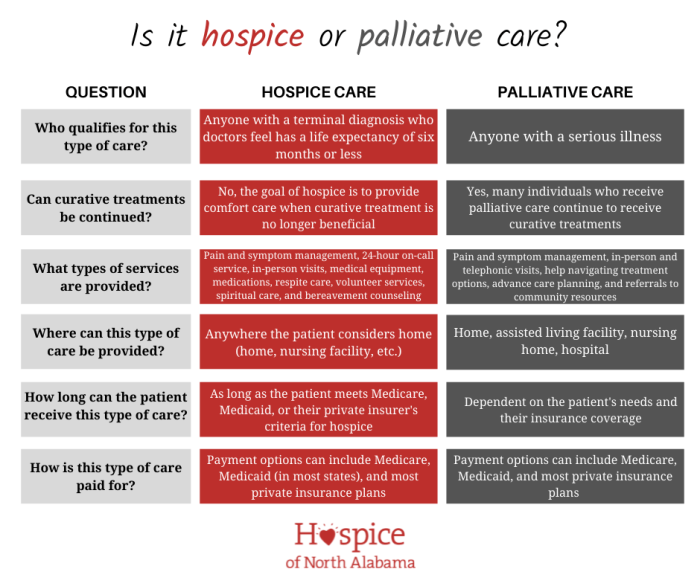Health benefits moon milk is a popular drink gaining attention for its potential to improve sleep and well-being. This creamy concoction, often featuring warming spices and calming herbs, is believed to offer a range of health advantages, from promoting relaxation to potentially supporting digestion. We’ll explore the ingredients, potential benefits, and even the potential drawbacks of this trending beverage.
From its historical roots to modern adaptations, we’ll delve into the fascinating world of moon milk. We’ll also examine how moon milk can be customized for various dietary needs and preferences, and discuss the importance of consulting with a healthcare professional before incorporating it into your routine.
Introduction to Moon Milk
Moon milk, a creamy, warm beverage, has gained popularity for its purported health benefits. It’s a comforting drink often enjoyed before bed, purportedly aiding relaxation and sleep. This beverage, often associated with mindful practices, is a blend of simple ingredients, each contributing its unique characteristics to the overall experience.The recipe, while modern in its popularity, likely draws inspiration from traditional herbal remedies and the use of warming spices for their therapeutic properties.
It’s a relatively simple preparation that can be tailored to individual preferences and dietary needs.
Defining Moon Milk
Moon milk is a warm, milky drink, typically made with plant-based or dairy-based milk, combined with spices, herbs, and other beneficial ingredients. The term “moon milk” is often associated with relaxation and sleep, reflecting the drink’s potential to aid in these areas. The drink’s appeal lies in its simple ingredients and preparation, making it adaptable to various dietary restrictions and personal tastes.
Ingredients and Preparation Methods
Moon milk typically consists of a base liquid, such as milk (dairy or plant-based), and various spices and herbs, including turmeric, cinnamon, ginger, and cardamom. Other ingredients, such as vanilla extract, honey, or maple syrup, are often added for taste and potential health benefits.The preparation process is straightforward. The ingredients are combined in a saucepan and heated gently, ensuring the milk doesn’t boil, preserving the delicate flavor and potential health benefits of the spices.
Once warmed, the drink is usually consumed warm or at room temperature.
Moon milk, a calming beverage, boasts various health benefits, like promoting relaxation and sleep. However, understanding conditions like reflex sympathetic dystrophy syndrome (RSD), what is reflex sympathetic dystrophy syndrome rsd , requires a more nuanced approach to wellness. While moon milk can be a soothing part of a broader healthy lifestyle, it’s crucial to remember that individual needs vary, and proper medical attention is paramount for conditions like RSD.
Ultimately, a holistic approach incorporating both mindful practices and professional guidance is key to optimal health.
Different Types of Moon Milk Recipes
The flexibility of moon milk allows for various modifications to cater to diverse dietary needs and preferences.
Moon milk is a soothing, warm drink that offers a variety of health benefits, like promoting relaxation and potentially aiding sleep. However, if you’re breastfeeding and dealing with a cold, you’ll want to be extra cautious about the cold medicine you take. Fortunately, there are safe brands and remedies available for managing cold symptoms while breastfeeding, and finding these can be essential.
For more details on safe cold medicine options, check out this helpful guide on cold medicine while breastfeeding safe brands and remedies. Even with these precautions, the soothing properties of moon milk can still be a great way to support your health and well-being during this time.
| Recipe Type | Base Milk | Spices/Herbs | Sweetener | Other Considerations |
|---|---|---|---|---|
| Dairy-Based | Cow’s milk, goat’s milk | Turmeric, cinnamon, ginger, cardamom | Honey, maple syrup, or brown sugar | May contain lactose, depending on the milk source. |
| Vegan | Almond milk, soy milk, oat milk, cashew milk | Turmeric, cinnamon, ginger, cardamom, vanilla extract | Maple syrup, agave nectar, or dates | Suitable for individuals following a vegan or dairy-free diet. Ensure the chosen milk is vegan-friendly. |
These variations allow individuals to tailor the drink to their specific dietary needs and preferences. The table above provides a general comparison, but many variations exist, each offering unique flavor profiles and potential health benefits.
Ingredients and Their Potential Health Benefits
Moon milk, a comforting and creamy beverage, often incorporates a variety of ingredients beyond just milk. Understanding the potential health benefits of these ingredients can help you appreciate the holistic approach to well-being this drink promotes. From calming herbs to nutritious spices, each addition contributes to the overall experience and potential health advantages.The diverse range of ingredients in moon milk offers a potential boost to overall well-being.
Each component, from the milk base to the spices and herbs, brings its unique set of nutrients and bioactive compounds, which may contribute to various health benefits. Careful consideration of these ingredients and their interactions can help individuals tailor their moon milk to meet their specific needs.
Common Ingredients and Their Health Properties
A variety of ingredients commonly feature in moon milk recipes. Understanding their individual properties can help appreciate the potential benefits of this comforting drink.
- Milk (Cow’s, Almond, or other): Dairy milk provides calcium, a crucial mineral for strong bones and teeth. Almond milk, a plant-based alternative, is a good source of vitamin E and healthy fats. Different types of milk offer varying nutritional profiles.
- Spices (Cinnamon, Ginger, Turmeric): Spices like cinnamon, ginger, and turmeric are not just flavorful additions; they also possess potential health benefits. Cinnamon may help regulate blood sugar levels, ginger is known for its anti-inflammatory properties, and turmeric contains curcumin, a powerful antioxidant with anti-inflammatory effects. Scientific studies suggest that regular consumption of these spices can contribute to overall health. For example, studies have linked turmeric to reduced inflammation in individuals with arthritis.
- Herbs (Valerian Root, Chamomile): Herbs like valerian root and chamomile are often included for their calming properties. Valerian root has traditionally been used to promote relaxation and sleep, while chamomile is known for its soothing effects on the nervous system. These herbs can be particularly beneficial for individuals experiencing stress or sleep disturbances.
- Honey or Maple Syrup (Optional): These sweeteners can add sweetness and potential health benefits. Honey is a natural source of antioxidants, while maple syrup provides minerals and antioxidants. However, be mindful of added sugar and portion control, as excessive intake of sweeteners can have negative health implications.
Potential Nutritional Value of a Typical Serving, Health benefits moon milk
A typical serving of moon milk, depending on the ingredients and quantities used, can provide a range of essential nutrients. The nutritional profile varies greatly depending on the specific ingredients and amounts incorporated. For example, a serving using cow’s milk will have a different nutritional profile than a serving using almond milk.
| Ingredient | Potential Nutritional Value (Example) | Potential Impact on Health |
|---|---|---|
| Milk (Cow’s) | Calcium, Vitamin D, Protein | Strong bones and teeth, muscle function, satiety |
| Cinnamon | Antioxidants, potential blood sugar regulation | May help manage blood sugar levels, boost overall antioxidant intake |
| Ginger | Anti-inflammatory compounds | May reduce inflammation, potentially aiding digestion |
| Turmeric | Curcumin (antioxidant), anti-inflammatory | Potential benefits for joint health, overall inflammation reduction |
| Chamomile | Antioxidant, calming properties | May promote relaxation and better sleep quality |
Potential Health Benefits
Moon milk, a warm beverage often enjoyed before bed, boasts a potential array of health benefits. While not a cure-all, its ingredients, carefully selected for their known properties, may contribute to a more restful sleep, reduced stress, and potentially improved overall well-being. These benefits are often linked to the combined effects of the herbs and spices in the mixture, working synergistically to create a calming and restorative experience.
Effects on Sleep Quality
Moon milk’s calming properties can positively influence sleep quality. Warm beverages, in general, can promote relaxation and induce drowsiness, making them a common bedtime ritual for many. The ingredients, particularly the warming spices and herbs, are often chosen for their soothing effects on the nervous system, which can contribute to a more tranquil sleep environment. This can lead to improved sleep onset latency and a more restorative sleep cycle.
Calming and Relaxing Effects
Moon milk’s potential to induce relaxation stems from the combined action of its ingredients. Spices like cinnamon and cardamom, and herbs like chamomile, are known for their calming properties. Chamomile, in particular, has been traditionally used for its sedative effects, promoting relaxation and reducing anxiety. The warmth of the beverage itself contributes to a sense of comfort and well-being, further enhancing its relaxing properties.
Effects on Mood and Stress Levels
The calming and stress-reducing effects of moon milk can indirectly impact mood. By promoting relaxation and reducing anxiety, moon milk may help regulate mood swings and manage stress. This is supported by the known relaxing properties of the herbs and spices, which can help alleviate feelings of tension and irritability.
Benefits for Immune Function
Certain ingredients in moon milk may offer support to the immune system. Turmeric, a key ingredient, contains curcumin, a potent anti-inflammatory compound with potential immune-boosting properties. Other ingredients, such as ginger and cinnamon, are also known for their potential to support the immune system. However, it’s crucial to note that moon milk is not a substitute for professional medical advice or treatment for immune-related conditions.
Benefits for Digestion
Moon milk’s ingredients can potentially support digestive health. Ginger, for example, is a common remedy for nausea and digestive discomfort. The warming properties of the spices can also promote healthy digestion. Cinnamon, in particular, is believed to aid in the regulation of blood sugar levels, which can indirectly support digestive health. However, individual responses to these ingredients can vary.
Benefits for Inflammation and Pain Management
Turmeric, with its curcumin content, has been widely studied for its anti-inflammatory properties. This property can potentially contribute to the management of mild inflammation and pain. However, it’s important to emphasize that moon milk is not a replacement for medical treatment for chronic pain or inflammation. Consult a healthcare professional for any concerns regarding pain or inflammation.
Potential Drawbacks and Considerations
Moon milk, despite its purported health benefits, is not a magic potion. Like any dietary addition, it comes with potential drawbacks and considerations that should be factored into its inclusion in your daily routine. Understanding these aspects can help you make informed decisions about whether moon milk is suitable for you.
Potential Allergens and Sensitivities
Many moon milk recipes incorporate ingredients that can trigger allergic reactions or sensitivities in susceptible individuals. Milk, a common base, can cause lactose intolerance or allergic reactions. Other ingredients like spices, nuts, or seeds, if included, might also pose a risk. Careful consideration of personal dietary restrictions and allergies is crucial before incorporating moon milk into your diet.
Potential Interactions with Medications and Supplements
Some ingredients in moon milk might interact with certain medications or supplements. For example, certain herbs, if taken with blood thinners, could increase the risk of bleeding. Similarly, supplements that affect blood sugar levels might interact with the natural sugars present in some moon milk recipes. Consulting a doctor or pharmacist before combining moon milk with medications or supplements is strongly recommended to avoid potential complications.
Moon milk, a creamy drink often touted for its calming properties, offers potential health benefits like improved sleep. However, while some swear by adrenal cocktails for boosting energy and stress management, the effectiveness of these concoctions is debatable. Studies on their efficacy are mixed, and the long-term effects aren’t fully understood, especially when considering the potential for imbalances.
do adrenal cocktails really work Regardless, incorporating calming drinks like moon milk into your routine might be a beneficial addition to your health journey, promoting relaxation and a sense of well-being.
Possible Side Effects
While generally considered safe, moon milk, like any food, may cause mild side effects in some individuals. For example, some individuals might experience digestive discomfort such as bloating or gas after consuming it. Also, certain herbs or spices used in moon milk recipes might cause allergic reactions in sensitive individuals.
Potential Risks for Specific Health Conditions
Individuals with pre-existing health conditions should exercise caution when consuming moon milk. For instance, those with diabetes need to carefully consider the sugar content of their moon milk recipes to avoid significant fluctuations in blood sugar levels. Similarly, individuals with kidney issues should carefully manage the intake of certain ingredients, especially those with high mineral content. It’s always best to consult with a healthcare professional to determine if moon milk is appropriate for their specific needs.
Importance of Professional Consultation
Given the potential for interactions and side effects, it’s vital to consult a healthcare professional before incorporating moon milk into your regular diet, especially if you have any underlying health conditions. A doctor can assess your individual needs and recommend adjustments to the recipe or ingredients, if necessary. This personalized approach ensures the safety and effectiveness of moon milk for your specific situation.
Summary Table of Potential Risks and Precautions
| Potential Risk | Precautions |
|---|---|
| Allergic reactions (to milk, spices, nuts, etc.) | Identify and avoid known allergens. Use caution with new ingredients. |
| Interactions with medications/supplements | Consult a doctor or pharmacist before combining moon milk with medications or supplements. |
| Digestive discomfort (bloating, gas) | Start with small portions and gradually increase intake. |
| Impact on specific health conditions (diabetes, kidney issues) | Consult a healthcare professional to assess the suitability and adjust recipes accordingly. |
Moon Milk and Specific Health Conditions: Health Benefits Moon Milk
Moon milk, with its calming ingredients, has garnered interest for its potential to support various health conditions. While it’s not a replacement for professional medical advice, incorporating moon milk into a holistic approach to wellness can be beneficial for some individuals. This section delves into how moon milk can potentially complement existing health management strategies, considering its impact on different conditions.Moon milk’s ingredients, such as warming spices, calming herbs, and soothing milk or plant-based alternatives, can create a relaxing environment conducive to better sleep and stress reduction.
However, individual responses may vary, and it’s crucial to understand the potential benefits and drawbacks before integrating it into a health plan.
Anxiety
Moon milk’s calming ingredients can potentially alleviate mild anxiety symptoms. The warm milk, combined with calming herbs like chamomile and lavender, can induce a sense of relaxation. Individuals experiencing mild anxiety may find the ritual of preparing and drinking moon milk a soothing practice, promoting a sense of calm before bed.
Insomnia
Moon milk’s potential to promote better sleep is a key reason for its use in managing insomnia. The combination of warm milk, calming herbs, and a potentially relaxing ritual can contribute to a more restful sleep experience. However, individual responses can vary, and it’s crucial to consider individual needs and potential side effects.
Potential Benefits and Drawbacks
- Moon milk, due to its relaxing properties, can support individuals experiencing mild anxiety or insomnia. The ritual of preparation and consumption can create a calming atmosphere, potentially reducing stress and promoting relaxation. However, it’s essential to acknowledge that moon milk is not a substitute for professional medical treatment.
- Potential drawbacks may include individual sensitivities to ingredients or the potential for side effects associated with specific components. If you have pre-existing health conditions or are taking medications, consulting a healthcare professional before incorporating moon milk into your routine is recommended. Careful monitoring of individual responses to moon milk is vital.
Managing Specific Health Concerns
Moon milk can be incorporated into existing health management strategies to provide additional support. For example, for individuals experiencing mild anxiety, the calming properties of moon milk can complement therapy or mindfulness practices. Similarly, for those with insomnia, moon milk can contribute to a more relaxing bedtime routine, complementing other sleep hygiene practices.
Dietary Adaptations
- Adapting moon milk recipes for specific dietary needs is straightforward. For individuals following a vegan or dairy-free diet, plant-based milk alternatives like almond, soy, or oat milk can be used. Similarly, substituting honey for sugar or using different spices can accommodate various dietary preferences.
- Individuals with allergies or sensitivities to certain ingredients should adjust the recipe accordingly. Consult a nutritionist or allergist for personalized guidance to ensure the ingredients are safe and suitable for their needs. For example, avoiding nuts or dairy is crucial for those with allergies.
Individual Experiences
- Anecdotal evidence suggests that moon milk can be helpful for managing mild anxiety and insomnia. For instance, some individuals have reported a decrease in anxiety levels and improved sleep quality after incorporating moon milk into their routine. However, these experiences are not scientific evidence.
- It is essential to approach moon milk as a potential complement to, not a replacement for, established medical advice. Consulting a healthcare professional for any health concerns is always recommended.
Scientific Research and Evidence
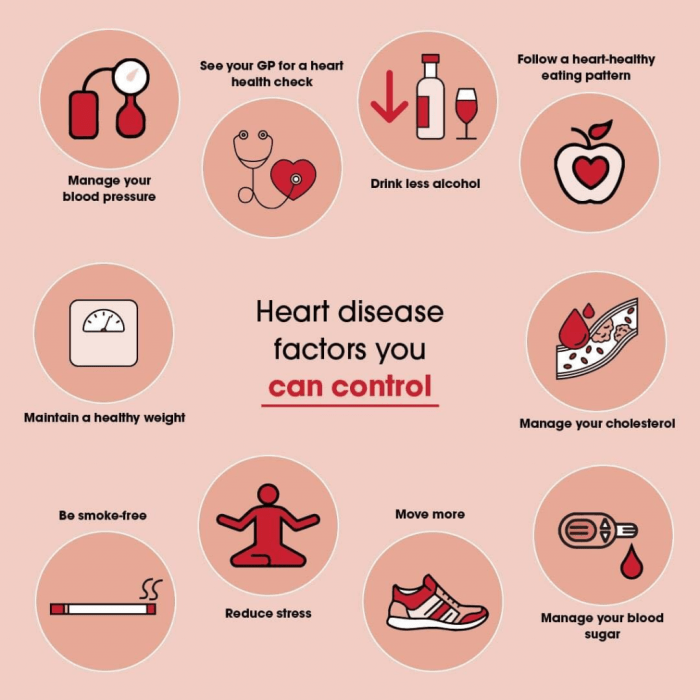
While the anecdotal evidence surrounding moon milk is substantial, robust scientific research specifically focused on its overall health benefits is limited. The concoction’s popularity stems largely from the potential health benefits of its individual ingredients, but a lack of comprehensive studies hinders a definitive understanding of their synergistic effects within moon milk.The ingredients in moon milk, such as turmeric, ginger, and milk, have been studied individually for their potential health benefits.
However, these studies typically don’t investigate the combined effects of these ingredients in a beverage like moon milk. This lack of research is a significant gap in the current understanding of moon milk’s potential health benefits.
Current Research on Individual Ingredients
The existing research primarily focuses on the individual components of moon milk, rather than the combined effects of all ingredients. For instance, studies have explored the anti-inflammatory properties of turmeric, the potential digestive benefits of ginger, and the nutritional value of milk.
- Turmeric, rich in curcumin, has shown promise in reducing inflammation in some studies. Animal studies and some human trials have indicated potential benefits in conditions like arthritis and certain types of cancer. However, more human studies with larger sample sizes are needed to confirm these findings and understand optimal dosage.
- Ginger has demonstrated potential anti-nausea and anti-inflammatory properties in various studies. Clinical trials have explored its efficacy in managing nausea associated with pregnancy and motion sickness. Further research is needed to fully understand its effectiveness for other conditions and optimal dosage.
- Milk, a source of calcium and protein, plays a crucial role in bone health and muscle development. Numerous studies have highlighted the importance of calcium and protein for overall health, particularly during childhood and adolescence. However, individual responses to milk can vary, and further research may be needed to explore different types of milk and their impact on health.
Gaps in the Research
A significant gap exists in the research regarding the synergistic effects of combining these ingredients in moon milk. While individual ingredients show potential health benefits, their interaction and overall impact when consumed together require further investigation.
- Lack of studies on the combined effects of all ingredients: The existing research primarily focuses on individual ingredients, not their interaction in the context of moon milk. This crucial information is missing.
- Limited human trials: Many studies are based on animal models or small-scale human trials. More extensive, large-scale human trials are needed to confirm the findings and establish the effectiveness of moon milk in humans.
- Variability in preparation and ingredients: The recipes for moon milk vary considerably. Different types of milk, varying amounts of spices, and differing preparation methods could impact the potential health benefits. Standardized protocols for research are crucial to produce consistent results.
The Need for Further Research
To fully understand the potential health benefits of moon milk, more comprehensive research is necessary. Studies need to address the synergistic effects of the combined ingredients and investigate the impact on various health markers.
- Controlled trials with larger sample sizes are essential to confirm the preliminary findings and establish the effectiveness of moon milk in different populations.
- Studies investigating the optimal composition of moon milk, including the types of milk, spices, and preparation methods, would provide valuable information to maximize potential benefits.
- Longitudinal studies to evaluate the long-term effects of consuming moon milk on various health markers are crucial to fully understand its impact on health.
Recipes and Variations

Moon milk, with its soothing warmth and potential health benefits, is more than just a drink; it’s a customizable experience. This section explores different flavor profiles and ingredient variations, allowing you to tailor your moon milk to your personal preferences and dietary needs. From calming vanilla to invigorating ginger, we’ll guide you through creating unique moon milk recipes that are both delicious and potentially beneficial.Exploring diverse flavor profiles and ingredient combinations is key to enjoying moon milk.
Each recipe offers a distinct taste experience while potentially providing a range of health benefits. The versatility of moon milk allows you to adjust ingredients to suit your dietary needs and personal preferences.
Moon Milk Recipe Variations
Moon milk’s versatility allows for a wide array of flavor combinations. These recipes are just starting points; feel free to experiment and create your own unique creations.
- Classic Vanilla Moon Milk
- This recipe emphasizes a comforting and familiar flavor profile.
- Ingredients: 1 cup unsweetened almond milk, 1/2 teaspoon vanilla extract, 1/4 teaspoon cinnamon, 1/4 teaspoon turmeric, 1/4 teaspoon ginger, 1/2 teaspoon honey or maple syrup (optional), pinch of salt.
- Preparation: Combine all ingredients in a saucepan. Heat gently over medium heat, stirring frequently, until warmed through. Do not boil. Pour into a mug and enjoy.
- Spiced Ginger Moon Milk
- This recipe offers a warming and invigorating flavor profile.
- Ingredients: 1 cup unsweetened coconut milk, 1/4 teaspoon ground ginger, 1/4 teaspoon cardamom, 1/4 teaspoon cinnamon, 1/4 teaspoon turmeric, 1/2 teaspoon honey or maple syrup (optional), pinch of salt.
- Preparation: Combine all ingredients in a saucepan. Heat gently over medium heat, stirring frequently, until warmed through. Do not boil. Pour into a mug and enjoy.
- Chocolate Chai Moon Milk
- This recipe offers a decadent and comforting experience.
- Ingredients: 1 cup unsweetened soy milk, 1/4 teaspoon chai spice blend, 1/4 teaspoon cocoa powder, 1/4 teaspoon cinnamon, 1/4 teaspoon nutmeg, 1/2 teaspoon honey or maple syrup (optional), pinch of salt.
- Preparation: Combine all ingredients in a saucepan. Heat gently over medium heat, stirring frequently, until warmed through. Do not boil. Pour into a mug and enjoy.
Comparative Table of Recipes
The table below summarizes the key aspects of each moon milk recipe.
| Recipe | Ingredients | Nutritional Value (Approximate) | Potential Health Benefits |
|---|---|---|---|
| Classic Vanilla Moon Milk | Almond milk, vanilla, cinnamon, turmeric, ginger, honey/maple syrup, salt | Good source of calcium, vitamin D (depending on milk type), antioxidants | Potential for stress reduction, antioxidant support, improved digestion |
| Spiced Ginger Moon Milk | Coconut milk, ginger, cardamom, cinnamon, turmeric, honey/maple syrup, salt | Good source of healthy fats, fiber (depending on milk type), antioxidants | Potential for digestion support, immune system support, warming effect |
| Chocolate Chai Moon Milk | Soy milk, chai spice blend, cocoa powder, cinnamon, nutmeg, honey/maple syrup, salt | Good source of protein, antioxidants (depending on milk type), minerals | Potential for stress reduction, antioxidant support, improved mood |
Recipe Modifications
Moon milk can be adapted to various dietary needs and preferences.
- Dairy-Free Options: Substitute cow’s milk with almond, soy, coconut, or oat milk. Adjust sweetness as needed.
- Vegan Options: Ensure all ingredients are vegan-friendly. Use agave or another suitable sweetener.
- Gluten-Free Options: Ensure all ingredients are gluten-free. Choose a gluten-free milk alternative.
- Low-Sugar Options: Reduce or omit honey or maple syrup. Consider using a sugar-free alternative.
- Flavor Variations: Add other spices, extracts, or fruits to customize the flavor to your taste.
Cultural and Societal Perspectives
Moon milk, a comforting blend of warm milk and spices, has transcended its traditional origins and become a popular component of wellness routines worldwide. Its appeal lies not just in its purported health benefits, but also in its cultural significance and the ways it’s integrated into modern health and wellness trends. From its roots in ancient traditions to its current position as a staple in many modern homes, moon milk’s journey reflects the evolving nature of self-care and well-being.Beyond the physical benefits, moon milk often carries a symbolic meaning, particularly in its connection to nighttime rituals and relaxation.
This aligns with a growing global emphasis on mindful practices and self-care. Its accessibility and versatility further contribute to its widespread adoption across different cultures and demographics.
Cultural Significance of Moon Milk
Moon milk’s exact origins are somewhat unclear, but its components often have rich historical significance. For example, turmeric, a common ingredient, holds a revered position in Ayurvedic medicine, renowned for its potential health advantages. Milk itself has been a fundamental part of numerous cultures for centuries, carrying nutritional and social importance. The practice of incorporating these elements into a ritualistic drink suggests a cultural understanding of their combined benefits, although specific traditions and associated meanings may vary.
Moon Milk in Different Communities
Moon milk’s reception varies across different communities. In some communities, it’s a cherished part of nighttime routines, promoting relaxation and sleep. In other areas, it might be perceived as a modern wellness trend, reflecting the growing emphasis on holistic health and natural remedies. This diverse perception underscores the global reach of self-care and the adoption of natural remedies.
Moon Milk and Current Health and Wellness Trends
Moon milk aligns seamlessly with current health and wellness trends. Its focus on natural ingredients, potential relaxation benefits, and easy preparation appeals to those seeking holistic well-being. Its inclusion in social media and wellness communities further highlights its integration into modern self-care practices. The emphasis on natural remedies and mindful routines has created a perfect niche for moon milk.
Common Misconceptions and Myths
Understanding the potential benefits and limitations of moon milk is crucial. To avoid misconceptions, it’s essential to recognize that while moon milk might promote relaxation and potentially offer health benefits, it’s not a cure-all. There’s a common misunderstanding that moon milk is a miracle solution to all health problems. It’s important to maintain a balanced perspective, combining moon milk with a healthy lifestyle and professional guidance when necessary.
- Moon milk is a guaranteed cure for insomnia.
- Moon milk will instantly solve all health problems.
- The perceived “magic” of moon milk diminishes its actual health benefits.
- Moon milk can replace professional medical advice.
These points highlight the importance of responsible consumption and the recognition that moon milk should be considered a complementary practice, not a replacement for established medical advice. A balanced approach to well-being is always recommended.
Final Thoughts
In conclusion, moon milk presents a unique approach to relaxation and potential health benefits, but it’s important to approach it with a balanced perspective. Understanding the ingredients, potential benefits, and drawbacks is crucial for incorporating moon milk into your routine safely and effectively. While it may not be a miracle cure, it could potentially complement your existing wellness strategies.




